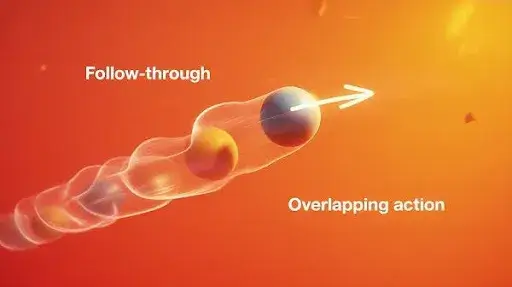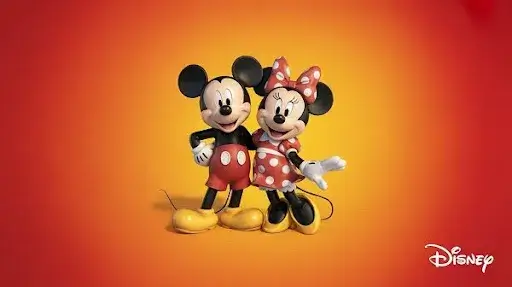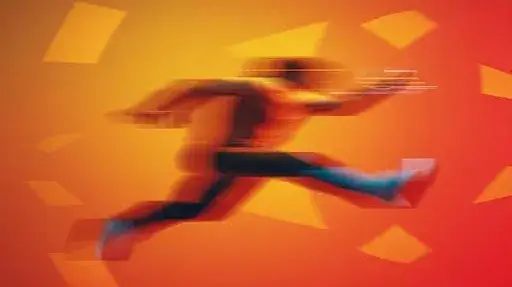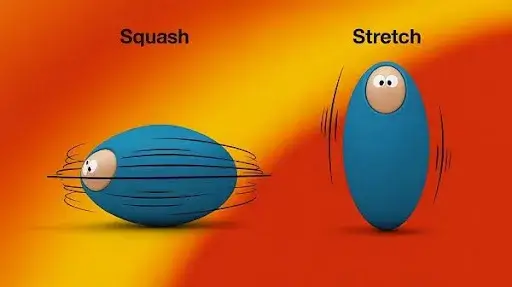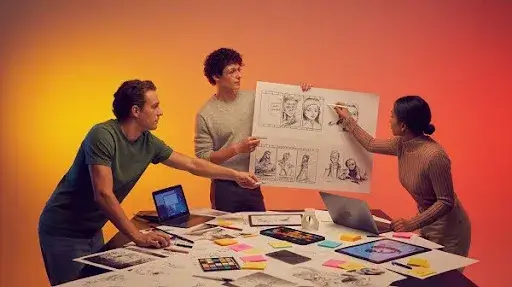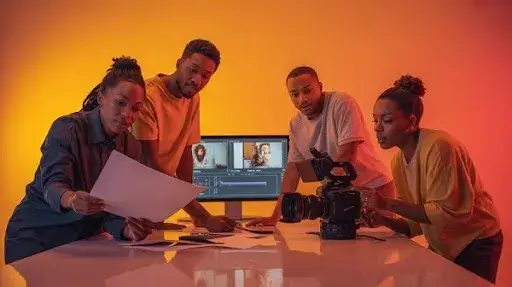Animation isn’t just about moving drawings around. It’s about movement that feels alive. When a character stops running but their hair still sways, or when different parts of the body move at slightly different speeds, that’s what sells the illusion of life. Two principles make this possible: follow through in animation and overlapping action.
These ideas have been around since Disney’s golden era, and they’re just as important now for studios, freelancers, and anyone looking to hire 3D animation company experts. They may sound technical, but once you see how they work, you’ll realize they are the backbone of natural, fluid motion techniques.
Why Follow Through in Animation Matters
What is Follow-Through Action?
Follow-through action is what happens after the main movement is finished. Think about inertia in motion. When a baseball player swings a bat, their arms and body don’t freeze the second they connect with the ball. The motion continues, slowing down naturally. That continuation is follow-through.
It adds weight and physics in animation. Without it, characters feel stiff, robotic, and unconvincing. With it, they feel grounded, as if they actually exist in a world where physics applies.
Everyday Examples of Follow-Through
- A dog shakes itself dry, and its ears keep flopping a moment longer.
- A superhero lands, and their cape whips forward before settling down.
- A child runs, then halts suddenly, but the backpack keeps sliding forward.
All of these are tiny details, but they make the scene believable. They create that sense of secondary motion which audiences may not consciously notice, but would definitely miss if it weren’t there.
Why Animators Depend on Follow-Through
Follow-through action is not just an artistic choice; it’s a rule baked into character animation rules. Ignoring it breaks the viewer’s trust. That’s why studios big and small practice this principle religiously.
For example, in the video game Spiritfarer, when Stella stops, her clothes and hat keep moving. This shows drag in animation, fabric reacting slower than the body. It’s a detail that brings charm, but more importantly, it communicates realistic movement in animation.
What is Overlapping Action?
Overlapping for Smooth Transitions Between Actions
Overlapping action is when different parts of a character’s body move at different times, overlapping instead of moving as one stiff unit. Instead of finishing one action and then starting the next, movements flow into each other. The result is smooth transitions between actions.
For instance, think of someone walking. Their legs move, but their arms don’t swing in perfect unison. Their torso twists slightly behind. Their head bobs at a different rhythm. That staggered motion is overlapping action, and it’s what makes movement feel fluid and organic.
Film Example: Woody in Toy Story
When Woody runs, his torso twists, his head bobs, and his hat bounces, all slightly out of sync. Without overlapping action, he’d look like a stiff toy robot. With it, he feels alive and expressive. That’s animation exaggeration vs realism in practice: exaggerating just enough for personality, but not so much that it looks fake.
Why Overlapping is Essential
Overlapping action prevents characters from looking mechanical. It ensures timing and spacing in animation reflect how real bodies move. Human motion is never perfectly synchronized, and overlapping is the animator’s tool to replicate that.
Disney’s Legacy and the Birth of These Principles
Animation principles like follow-through and overlapping action come from Disney’s legendary animators, the Nine Old Men. In the 1930s, they set out to figure out how to make drawings look alive. Their solutions, documented in The Illusion of Life, gave us the 12 character animation rules still used today.
In early shorts like Steamboat Willie, Mickey’s tail and ears had subtle follow-through. It was simple, but it made him bouncy and fun. From there, Disney refined these principles into essential guidelines that every studio follows. To this day, you can’t hire 3D animation company professionals without them knowing these basics.
The Core Difference Between Follow-Through and Overlapping
Both techniques work hand in hand, but they’re not the same.
- Follow-through action: the after-effect. Something continues moving after the main action stops. Example: hair still swaying after a sudden stop.
- Overlapping action: staggered motion. Different parts move at different times for fluidity. Example: torso twists behind while legs step forward.
Together, they make animation breathe. One adds inertia in motion, the other prevents robotic pauses. Without them, characters feel lifeless. With them, even cartoony exaggerations feel rooted in believable physics.
How to Use Follow-Through in Animation Like a Pro
For Beginners
- Study real life: Watch how clothing, hair, or even objects keep moving after someone stops.
- Practice small: Start with a single element like a scarf or ponytail before handling a full-body follow-through.
- Record references: Use slow-motion videos to observe drag in animation.
- Key poses first: Nail the main action, then layer the secondary motion.
For Advanced Animators
- Layered animation: Animate primary motion first, then add secondary motion like armor or cloth with slight delays.
- Control timing: Heavy objects follow through slower; light fabrics react faster.
- Use arcs and easing: Natural motion follows curves, not straight lines.
- Test often: Review frame-by-frame to spot unnatural stiffness.
How to Apply Overlapping Action in Animation
Beginner Approach
- Break down the body into parts. Don’t animate everything moving together.
- Add delays. When the torso turns, the head and arms can lag behind slightly.
- Watch cartoons. Notice how overlapping adds humor and energy.
Professional Approach
- Use timing and spacing in animation deliberately. Every body part has its own rhythm.
- Add overlapping to props too, belts, tails, jewelry.
- Study masterworks like Frozen. Elsa’s braid moves independently from her body, perfectly timed to match her graceful gestures.
Common Mistakes Animators Make
Overdoing Follow-Through
Excessive secondary motion can distract. If hair keeps flopping wildly when the scene doesn’t call for it, the audience stops focusing on the character. Balance is key.
Poor Timing in Overlapping
If overlapping parts move at the wrong speed, the result looks broken. Misaligned timing breaks smooth transitions between actions. Timing charts and reference studies can help here.
Why These Principles Are Non-Negotiable
Follow-through action and overlapping action may look like small details, but they are what separate amateur animation from professional-grade storytelling. They are the reason characters don’t look like cardboard cutouts. They breathe life into frames, transforming movement into performance.
Studios know this. It’s why you can’t skip these techniques if you want realistic movement in animation. And it’s why clients looking to hire 3D animation company experts demand them as part of the process.
Applying Follow-Through Across Different Styles
Follow-through in animation doesn’t always look the same. The approach shifts depending on the style of animation. Some productions chase realism while others thrive on exaggeration. The way you use drag in animation, timing, and spacing changes based on the tone of the project.
Realistic Movement in Animation
For realistic character animation, follow-through action needs to stay subtle. Audiences are quick to notice when fabric, hair, or limbs move unnaturally. In Pixar’s The Incredibles, Mr Incredible’s cape trails gently with his movement. The motion respects inertia in motion and feels convincing. Subtlety keeps the illusion intact.
Realism demands restraint. Animators focus on small cues, a coat sleeve brushing forward when the body stops, or a braid swinging just enough to remind us it’s heavy. These understated touches build believability.
Cartoony Exaggeration
Cartoons often push secondary motion further. In Looney Tunes, Bugs Bunny’s ears flop dramatically after he halts. It’s exaggerated, but it fits the humor. Here, follow-through is less about accurate physics and more about entertainment value. This is animation exaggeration vs realism in action.
For animators, it’s about reading the tone. Do you need lifelike weight and physics in animation? Or do you need comedic overstatement? The answer guides the amount of drag in the animation you add.
Overlapping Action Across Styles
Overlapping action also shifts with context. In realistic styles, overlaps should echo natural rhythm. In exaggerated cartoons, overlaps can be stretched for emphasis.
- Realistic overlap: Elsa’s braid in Frozen. The hair follows her movements with perfect timing and spacing in animation, delayed just enough to feel right.
- Exaggerated overlap: Woody in Toy Story. His limbs and hat bounce with overlapping energy, amplifying his personality.
Both approaches depend on smooth transitions between actions. Whether subtle or bold, the overlaps prevent motion from looking robotic.
Inspirational Examples of Follow-Through and Overlapping
Studio Ghibli’s Subtle Touch
Studio Ghibli excels at delicate motion. In Spirited Away, Chihiro’s hair streams back when she rides on Haku’s back. It’s not overdone, but it communicates speed and force. In My Neighbor Totoro, dresses and arms move with overlapping rhythms, grounding the characters in a tangible world. These small gestures connect viewers emotionally because they mirror real physics.
Pixar’s Dynamic Sequences
Pixar often leans on bold overlaps. In Toy Story, Woody’s energetic run feels alive thanks to head bobs, torso twists, and hat follow-through. In Finding Nemo, Marlin’s fins flutter after quick movements, echoing water resistance. These choices reveal character traits while keeping animation playful and believable.
Advanced Strategies for Professionals
Once the basics are in place, animators can push further with advanced fluid motion techniques.
Layering Secondary Motion
Primary motion comes first: walking, jumping, and landing. Afterwards, add layers of secondary motion: scarves, hair, tails, or armor. This staggered approach avoids clutter and ensures follow-through feels deliberate.
Controlling Weight and Material
Every object reacts differently. Heavy armor lags slower than silk. A ponytail swishes faster than a thick braid. Knowing how to represent different weights makes overlapping action and follow-through convincing.
Using Arcs and Curves
Straight-line motion looks stiff. Realistic movement in animation usually follows arcs. Combine easing (slow-in, slow-out) with arcs to give fluidity. Even exaggerated cartoons benefit from curved paths.
Reviewing Frame by Frame
Professional animators constantly step through their sequences. Watching frame by frame reveals flaws in timing and spacing. Tools like SyncSketch or built-in software scrubbing help refine every frame of overlapping action.
Frequently Asked Questions
What is the main difference between follow-through and overlapping action?
Follow-through in animation deals with what continues after the main movement stops, while overlapping action manages how different parts of the body move at different times during the action.
Why is follow-through action important?
It adds weight and physics in animation, making characters feel grounded and believable.
How can I practice overlapping action as a beginner?
Start by observing people walking. Notice how arms, heads, and torsos move at slightly different rhythms. Apply the same staggering to simple character rigs.
Can follow-through and overlapping action work in exaggerated animation?
Yes. In cartoons, exaggeration makes them funnier and more expressive. In realistic animation, they stay subtle to maintain believability.
What tools help refine these animation principles?
Software like Maya, Blender, and Adobe Animate allow animators to test timing and spacing frame by frame, ensuring smoother secondary motion.
Do professional studios always use these techniques?
Yes. Any serious character animation studio, from Pixar to Studio Ghibli, depends on them. They’re non-negotiable rules for lifelike and engaging animation.
Final Words
Follow-through action and overlapping action are not side notes. They are the heartbeat of fluid animation. These principles prevent stiffness, add weight, and turn movements into performances. They’re what make characters feel alive rather than robotic drawings.
For companies, marketing teams, or storytellers, the difference between amateur work and professional-grade animation often comes down to these details. If you want characters that connect with audiences, you need animators who understand character animation rules, timing, and spacing in animation at a professional level.
That’s why many brands and creators choose to hire 3D animation company specialists, such as Prolific Studio. We, one of the best animation studios in Reno, know how to balance animation exaggeration vs realism, when to keep follow-through subtle, and when to make overlapping action bold. They know how to breathe life into still frames.
Animation is more than movement; it’s performance. And performance depends on principles. Mastering follow-through in animation and overlapping action ensures that your stories don’t just move; they come alive.
Related Articles:

